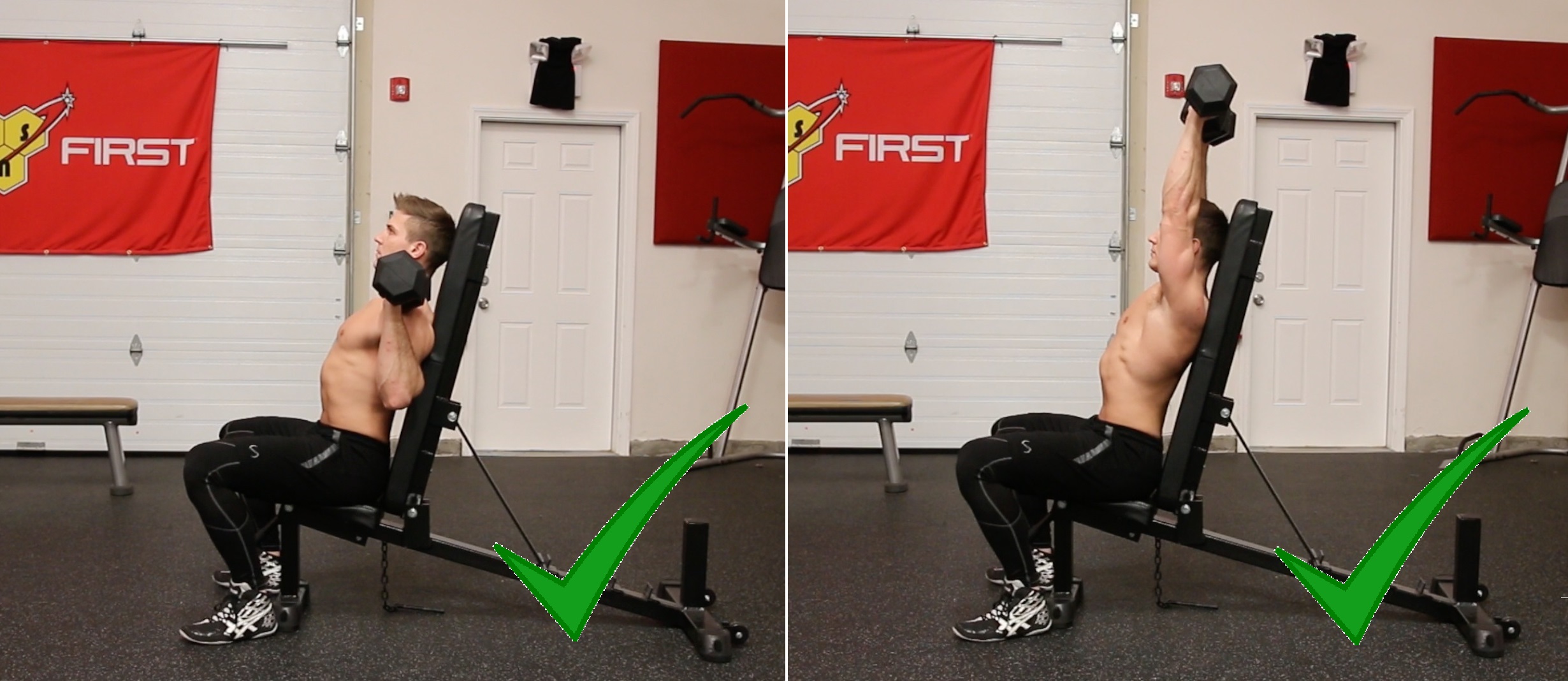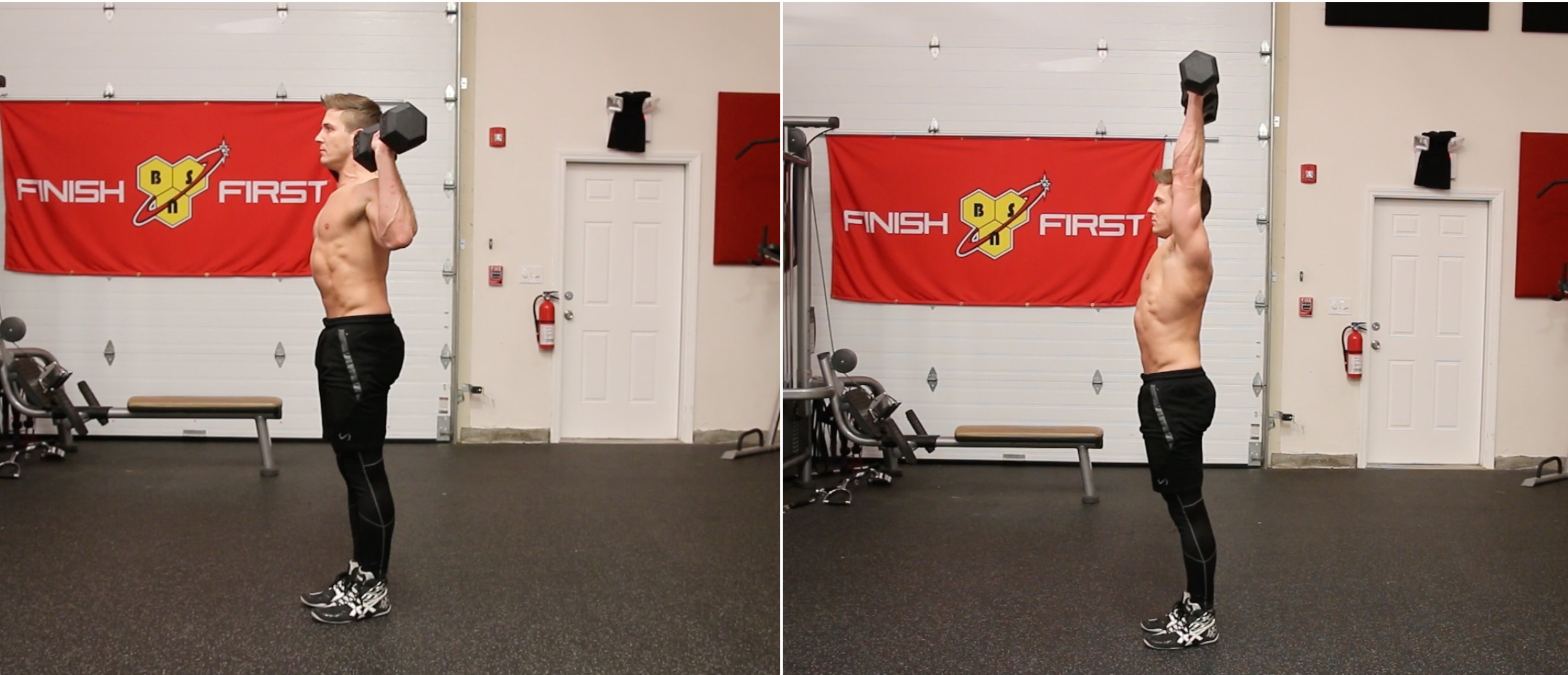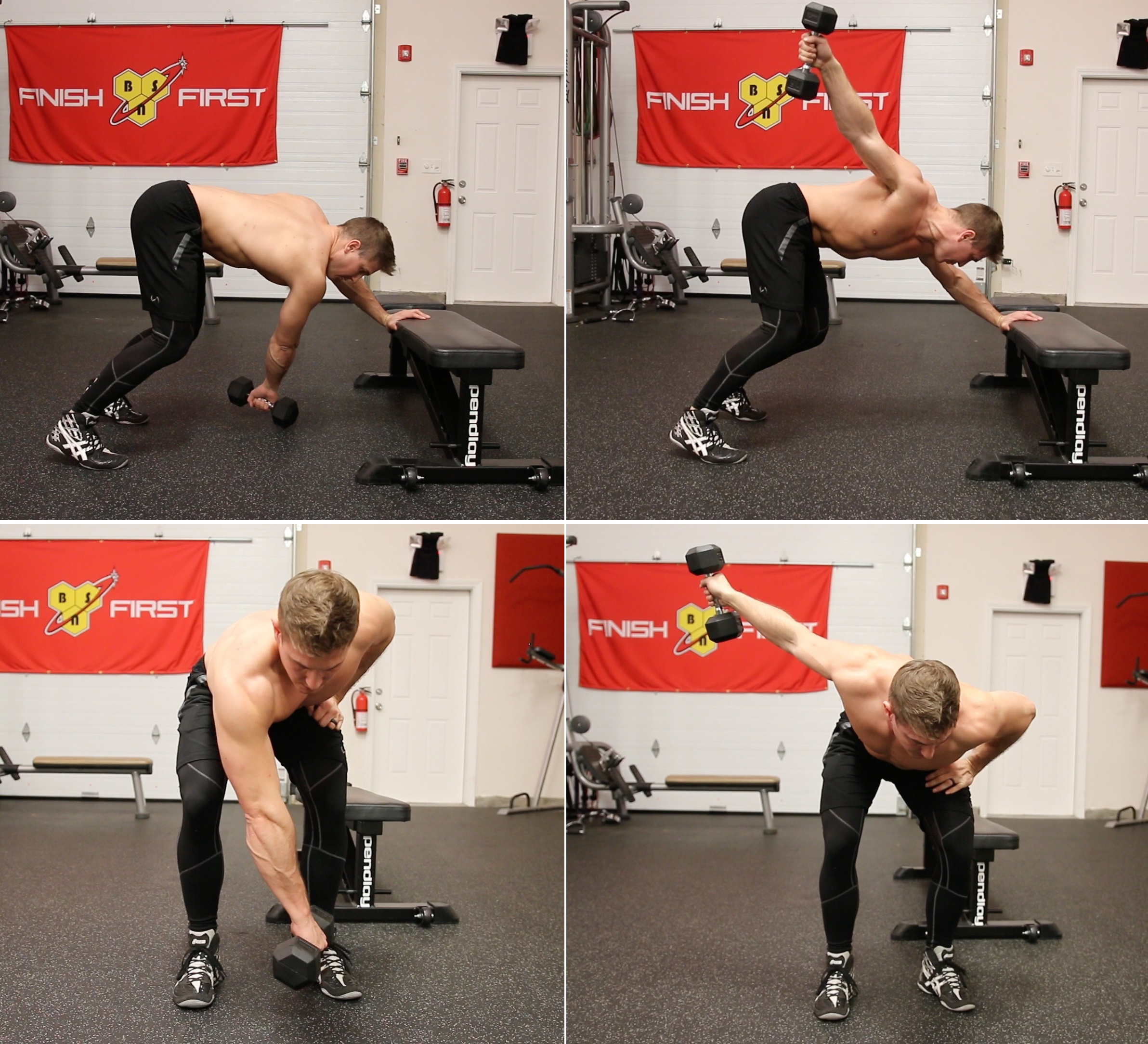2 Reasons Your Shoulders Stopped Growing
Fix Now!
Today we’re going to talk about the two reasons why your shoulders stopped growing, and more specifically, exercises that target the rear deltoid. The reason why we’re going to talk about the rear deltoid is because typically not matter what exercise you’re doing, if you’re targeting anterior or middle delts, you’re going to be able to target those heads of the deltoid pretty easily.
But when it comes to the rear deltoid, there are two very specific exercises that if you don’t do properly, you’re not going to see much activation, therefore your growth is going to start to lag. At the end of the article, I’ll also give you a BONUS exercise that you can add to the end of your next shoulder workout.
Exercise #1: Standing Shoulder Press
I’ve talked about this in the past, and I’ve actually made a VS series video on why the dumbbell variation is better than the barbell variation, which you can watch HERE. If you are doing a shoulder press, and more specifically a dumbbell shoulder press seated, there are a few different things that might happen to hinder your shoulder muscle building progress. Maybe the bench you’re using doesn’t go into a full upright position, or maybe you start to slide down the bench as you do your reps. What might also happen is your shoulders start to get tired so you arch your back even more, and the more you arch your back, the more you press the dumbbells in front of you, and the less you activate your rear deltoids.


So the best way to perform a dumbbell shoulder press in order to target all three heads of the deltoid, AND make sure you’re engaging your rear deltoids, is to do the exercise standing. The way that form is going to look is you will have the dumbbells out to your sides, on top of your shoulders and neck height. From here, you’ll press all the way to the top, always pressing ABOVE your head, and then you’ll return all the way back down to the starting position for full range of motion, and repeat for reps.

Now obviously when doing this exercise, you’re going to need some core control, so make sure you’re squeezing your core as hard as you can. For those of you who might be able to lift a bit heavier and you start to feel pressure in your lower back, it is 100% OK to use a weight belt. The main thing here is when you’re doing this exercise seated, there are a lot of things that could go wrong that you may not notice. In order to eliminate those risks, and to target more rear deltoids, just pick up your dumbbells and do the exercise standing. You will feel A LOT more shoulder engagement.
Exercise #2: Dumbbell Bent-Over Raise
Believe it or not, just by tweaking your form a tiny bit with this exercise, you’re going to get a lot more activation in those rear deltoids. The most common way to do this exercise is by taking two dumbbells, bending over, and raising both dumbbells out to the sides of your body at the same time. This is all well and good, but what happens when the dumbbells touch in the middle at the bottom of the movement, is the range of motion stops. But you want to be able to take advantage of full range of motion, and really take advantage of also getting a nice deep stretch at the bottom of the movement, and a nice flex at the top.

When performing this exercise, you want to try and keep your body as parallel to the floor as possible. I find that instead of moving both dumbbells at once, if I post on a bench with one arm and move my feet and legs backwards out of the way, I’m actually in a much better position to maximize the movement while keeping my upper body parallel to the ground, and I also have no pressure in my lower back. What you want to do to, to maximize the stretch at the bottom of the movement, is NOT keep your palm facing in the entire time throughout the exercise. As you swing through at the bottom of the movement, you should turn your palm in and internally rotate your hand, then externally rotate at the top of the movement. You’ll see right away that you start to get a lot more activation in those rear deltoids. Obviously once you finish on one side, you switch to the other side and do the same number of reps.
Can This Movement Be Done On A Cable Machine?
Now I know some of you will ask me if you can do this on a cable machine, and the answer is you can, but to be honest with you, it doesn’t really feel right. You’ll see what I mean when you try it, but if you grab a cable pulley and do the internal and external rotation, the second half of the movement is kind of choppy. It almost feels like you’re pushing through with your arm, rather than pulling the weight. Even if you do it in the bent-over position, it still doesn’t really feel the same as using a dumbbell, because again, the second half of the movement doesn’t feel right. The way the weight moves isn’t really allowing you to isolate and focus on your shoulder. If I had a choice, I would stick to the dumbbells.
BONUS EXERCISE: Reverse Overhead Dumbbell Lateral Raise
This is going to help you target your middle AND rear deltoids. You’re going to start the exercise with your arms out by your sides, a slight bend in your elbows and your palms facing up. In this position, you should already start to feel those deltoids activating. Once in the starting position, you’ll raise your arms up and over your head until the dumbbells touch each other, and then return to the starting position and repeat for reps.

You also want to keep your arms out directly by your sides as you do this. Keep your core tight, flex your glutes for stability, and this will really put a lot of tension through those middle and rear delts. This is a really unique exercise, and you don’t see too many people doing it, but I can tell you right now that the first time you try it, you’re going to INSTANTLY feel a difference and probably add it to your next workout.
Conclusion
Getting boulder shoulders might be the one thing holding you back from really bringing your physique together, and now with these tips, you can finally get those shoulders growing once again! I know I talk about using full range of motion a lot, but when you feel the difference by trying new things like this with a bit more range of motion, there’s no question that you’ll start to see the difference too, so it’s definitely worthwhile!








